
It is the harsh reality that many students within marginalized inner city communities are affected by gun violence. Students come to school with trauma, in need of a safe space to deal with their feelings and thoughts on death and violence. This lesson began with a group of students using collaborative artmaking rituals to heal from trauma caused by the death of a school member. Teacher and students continued to work as a collective to create memorials for all lives that have been lost to gun violence in Chicago in 2015 by facilitating doll-making workshops to honor victims, raise awareness, and create space for healing.
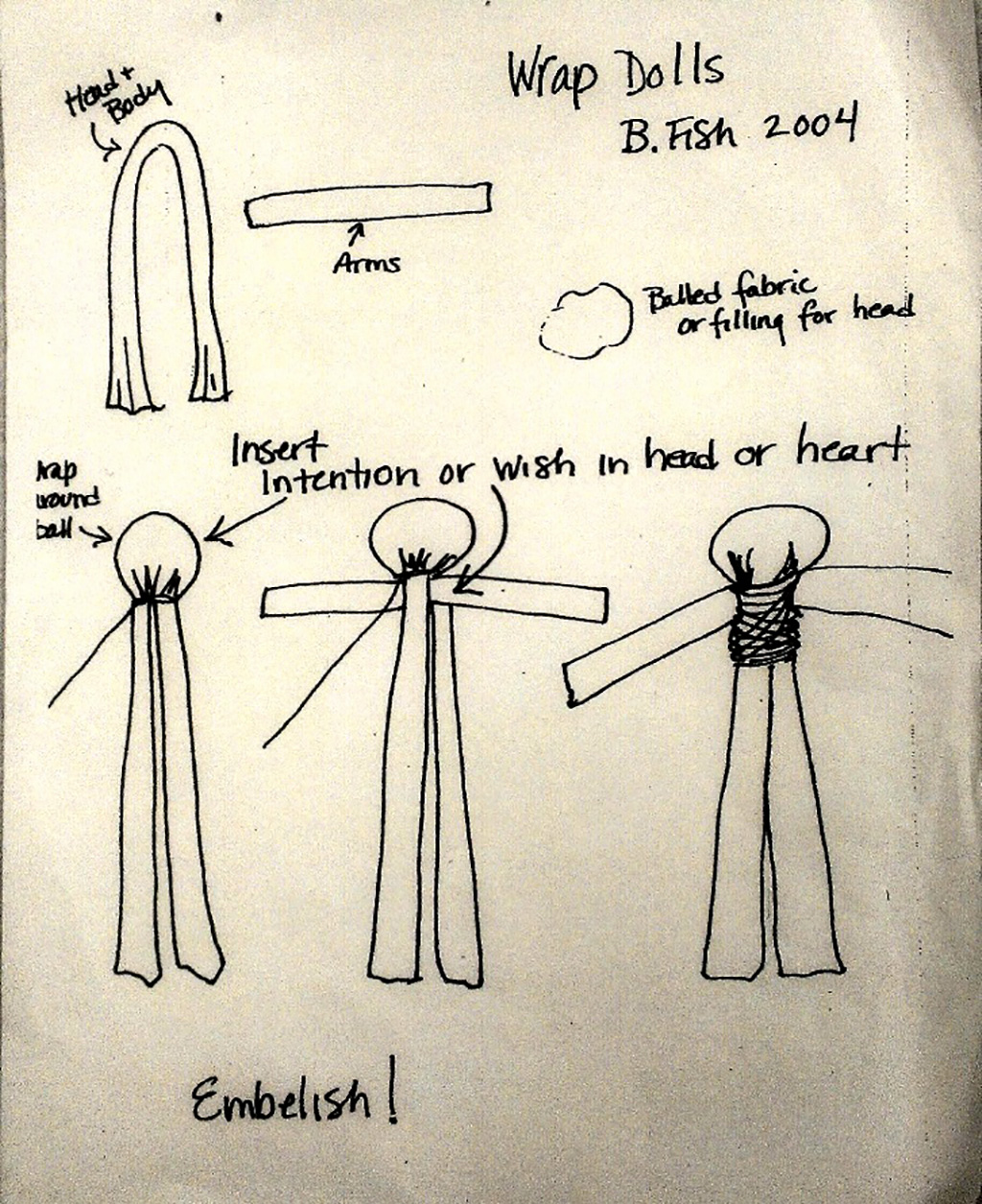
Goals + Objectives:
- Students will work collectively to memorialize victims of gun violence, process their own feelings and trauma, and create space for healing and peace.
- Students will investigate the underlying conditions of violence in our city. How do systems oppress? How can we resist oppression through art?
- Students will imaginatively repurpose recycled and discarded materials to make art.
Guiding Questions:
- How has gun violence affected your life?
- How can we bring awareness to the issue of gun violence in our community?
- How can we use art to make a change in our community and help people affected by gun violence heal?
-Can you identify memorials of resistance or memorials of remembrance?
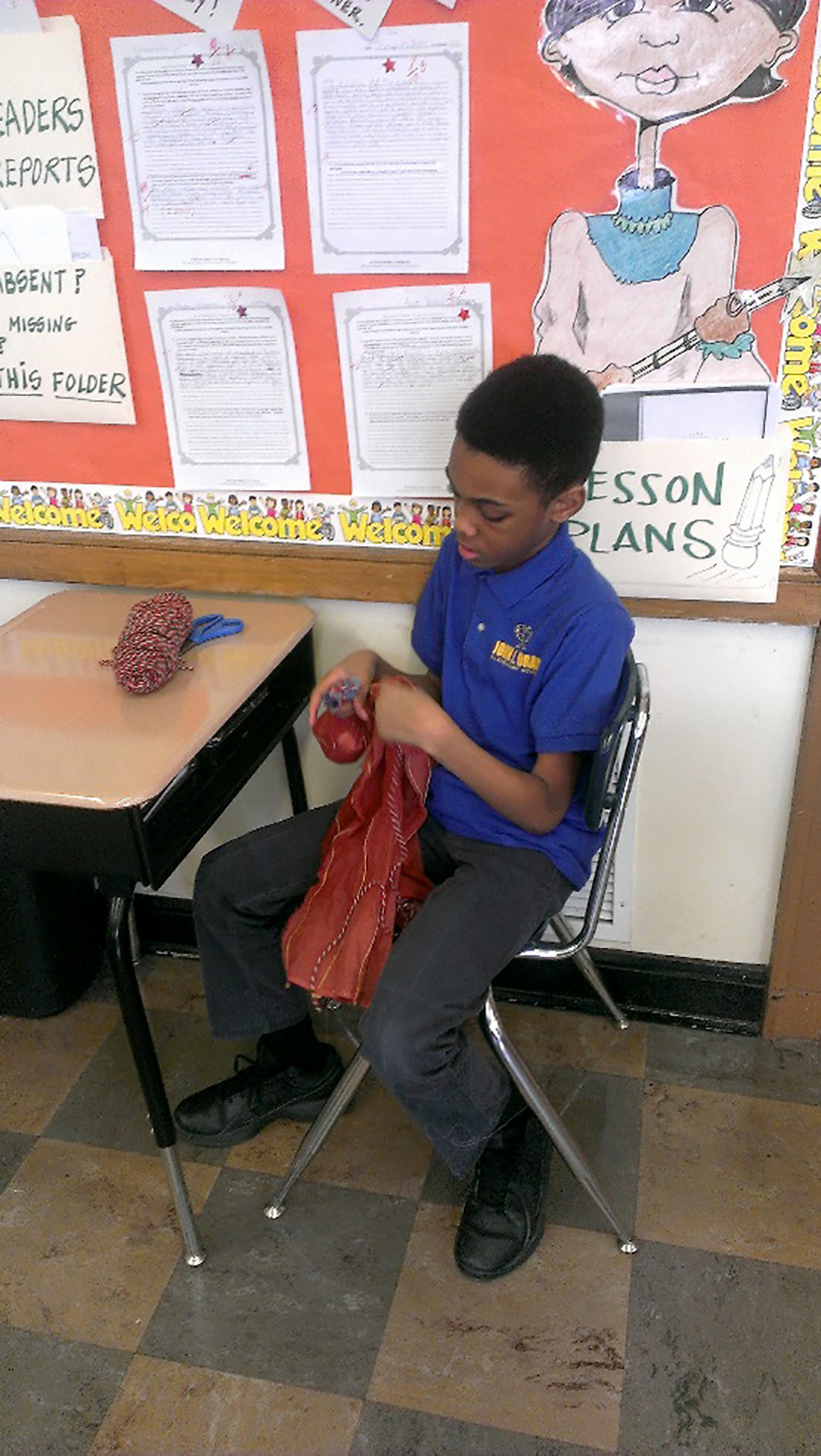
Documentation + Assessment
- Students write an intention, wishes, and fears on slips of paper, and embed the paper in the head or heart of the doll.
- Students take pictures using their mobile devices.
- Students write stories about how violence has affected their lives and share their stories and images on a blog about healing, trauma and violence.
- Communities will collaborate to create an art installation using these dolls that have been made across the city of Chicago in response to violence.
Learning Activities
Step 1: Identify students who would like to create dolls to bring awareness to the social justice issue of gun violence.
Step 2: Establish the physical space. Find a quiet safe space without interruptions for students to meet. Have students work in a circle or around a big table. Arrange materials in a location that is easy to access.
Step 3: Facilitate a check-in. Ask students to say their name, where their home is, and a name of a family member or ancestor who has died and whom they would like to honor. This activity will ground the space and frame the activity.
Step 4: Explore memorials and oppression. What memorials are in your city? Why do these memorials exist? What determines if something is worthy of being memorialized? Can you identify a memorial of resistance? What does it mean to resist? What is oppression? Have you ever felt oppressed? How is gun violence related to oppression and resistance? Students can discuss these questions with a partner and share out to the larger group. Students can tell a story about a time they felt oppressed through drawing or speaking.
Step 5: Memorial dolls. Explain that students will be making dolls for a memorial to all people who have died from gun violence within the city of Chicago in 2015. In the year 2015, 444 people were shot and killed. Each doll will represent a person. Students discuss how gun violence has affected their community.
Step 6: Fears and wishes. Students write down a fear they have about gun violence OR a wish they have around the issue of gun violence OR the intention of gun violence. Students will insert that small piece of paper into the head or the heart of the doll. Discuss how this placement is symbolic. Students may choose to embed the paper within the doll, or attach the paper so it is visible.
Step 7: Show students how to make the wrap doll. Take a piece of fabric and stuff it with filling. Take another piece of fabric and tie it around the body. Wrap the doll with yarn. This is very repetitive, but is a soothing activity. Students may become quiet while working or they may talk. Allow the students to lead the conversation, but remain authentic in your active listening and dialogue.
Step 8: Finishing the dolls. After completing the wrapping, students can embellish dolls with beads, feathers, markers, etc.
Step 9: Share Out. Ask students if anyone would like to share their doll and their fear or wish with the group. Students may also arrange their dolls together and present collectively. Lead discussions about how students felt as they created their dolls and the impact of making the dolls in a collective space.
Step 10: Teach others. Give students the task of sharing their experience with additional community members. Students teach others how to make the dolls as a memorial for victims of gun violence. As they teach others how to create the wrap dolls, students will further explore the questions: How do systems and institutions oppress? How can we resist oppression through play, art and dialogue? How can we create safe, healing spaces in the school and throughout the community?
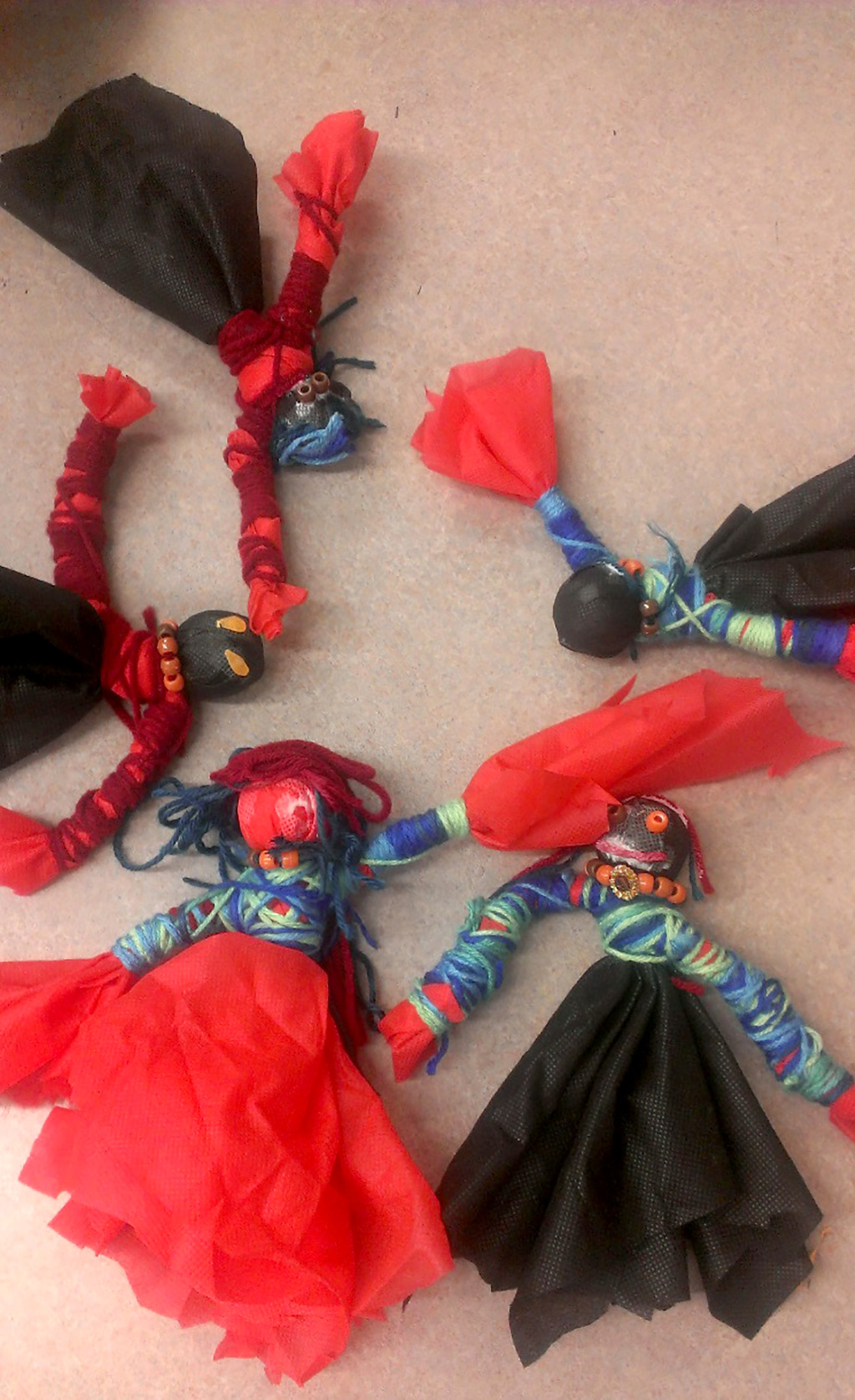
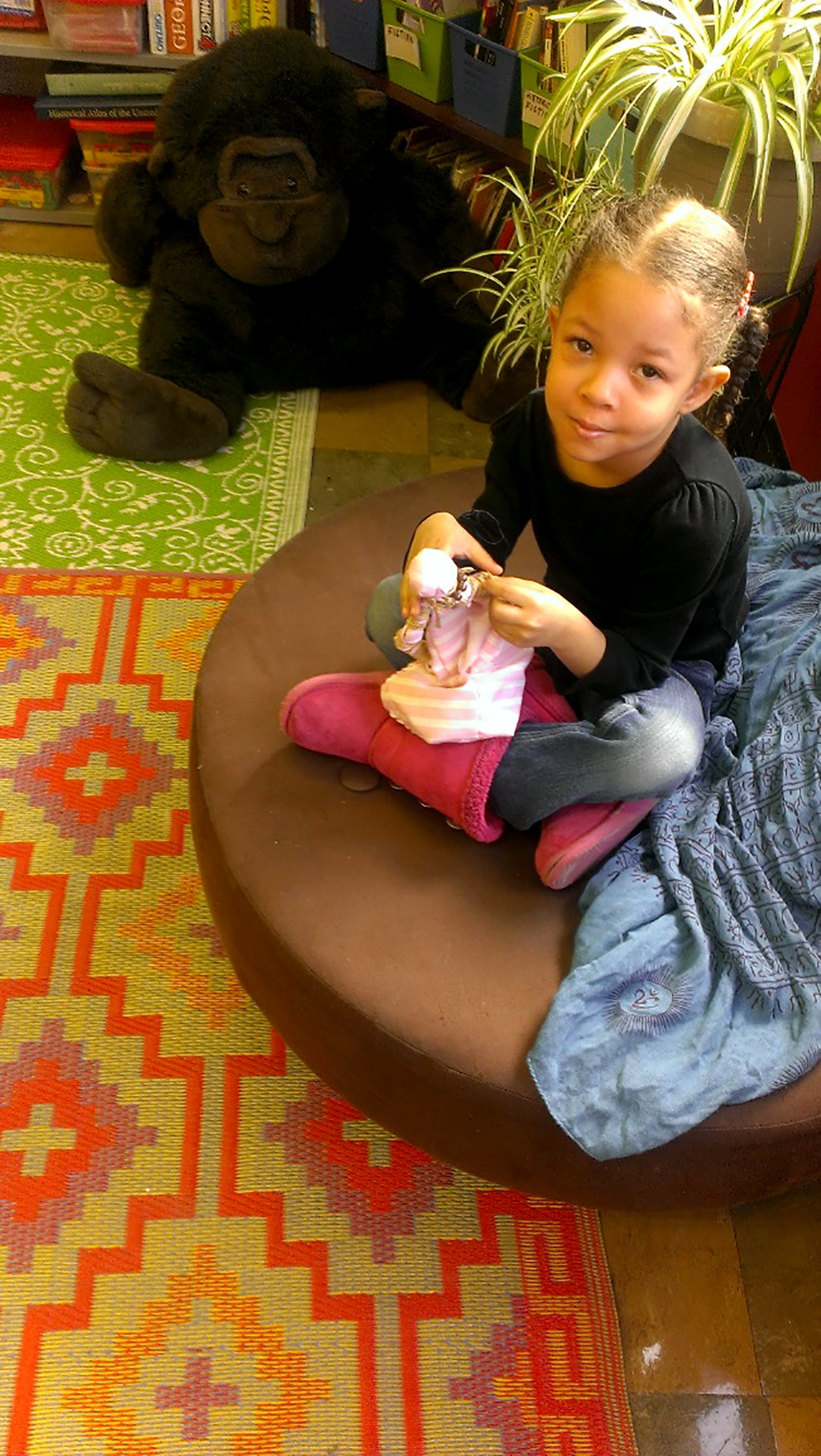
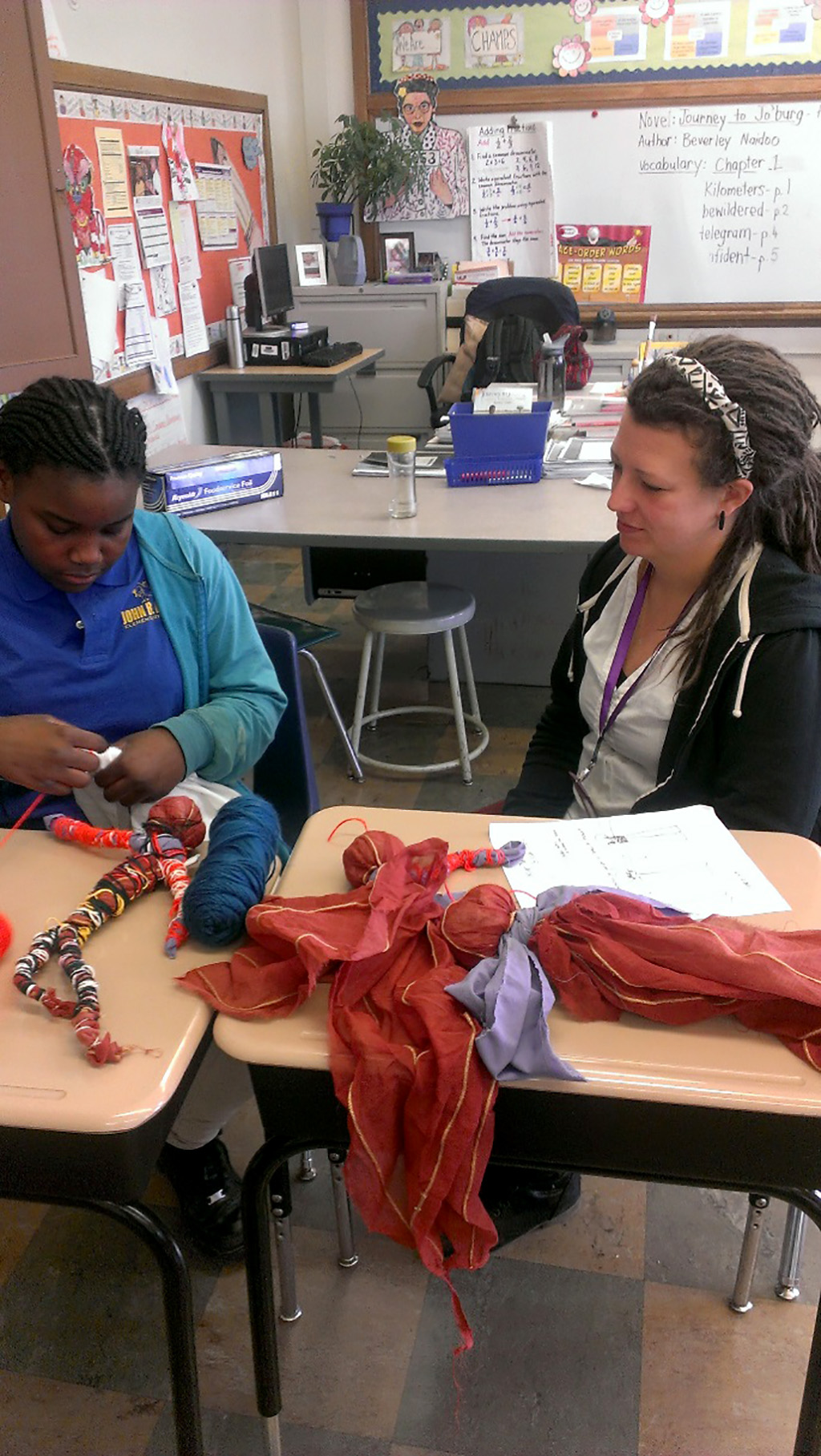
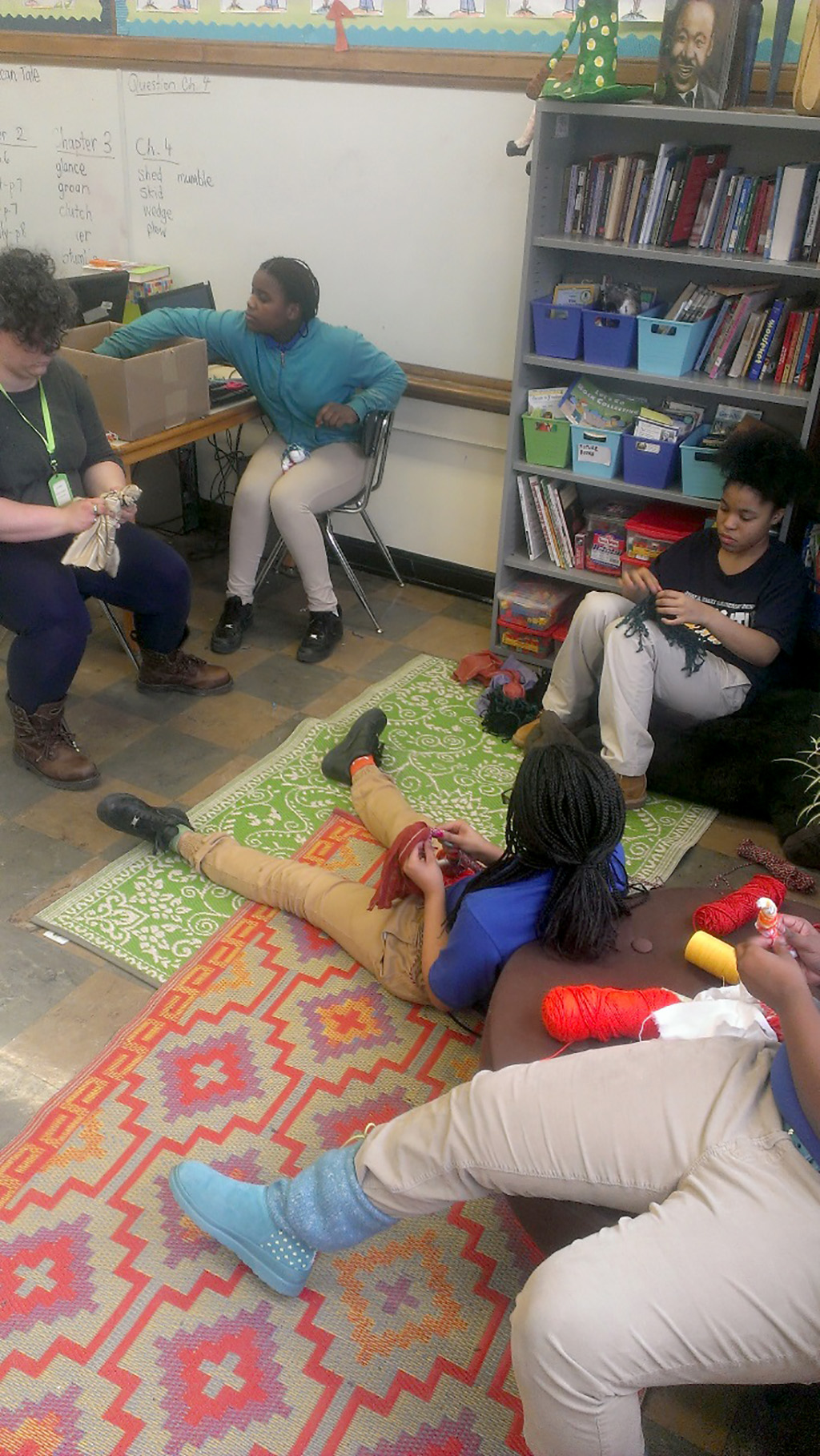

Materials
- Yarn
- Twine
- Fabric
- Feathers
- Beads
MCA Connections
Students visited the MCA and were inspired by several works in the Freedom Principle exhibition. Glenn Ligon’s Give Us A Poem helped students understand the idea of working as a collective while also remaining true to themselves as individuals. The repurposed furniture from closed CPS schools by John Preus in his Da Dee Dee Da Dum De Profundis installation introduced the theme of resilience and resistance in the face of oppression, showing that it is possible to make something useful out of discarded scraps. The concept of repurposing items to create something new and useful that also memorializes tragedy, and the way this process parallels healing and transitioning through trauma, helped guide students during this project.
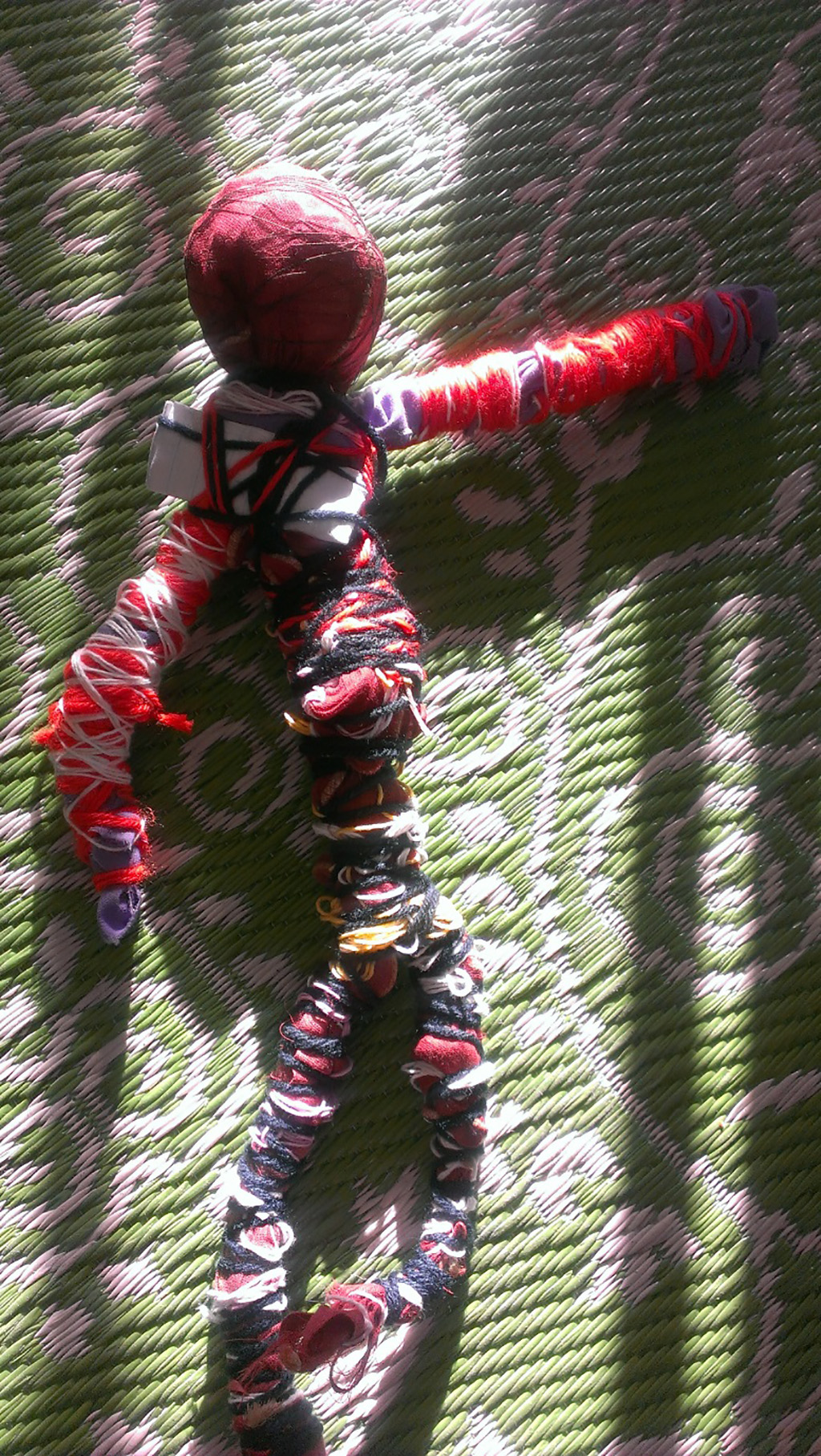
References + Resources
- Aud Franjou
- Wrapped Art on Pinterest
- Healing and Transformative Dolls
- John Preus
- Jane Addams/Hull House/Cities of Peace
- Chicago Torture Justice Memorials
- Memorial Ritual and Art: A Case Study and Exploration of the Potential of Healing
Rochele Royster
John B. Drake Elementary School
Rochele was born in the city of Washington D.C., but was raised in the rural south. The Blue Ridge Mountains of central Virginia were the backdrop for her childhood home, which was nestled in a forest of cedar, white pine, and red oak trees. As a child, she had an active imagination and spent hours making dolls out of old socks, yarn, and mismatched buttons. She learned how to grow her own food, harvest produce, and can it for the winter. In the summer, Rochele and her brother and would dirty their knees tasting honeysuckles and prick their fingers picking the sweetest blackberries for the tastiest pies. Her love for creating grew into a love for the fine arts. She studied studio art in college and later received her graduate degree in Art Therapy from the School of the Art Institute of Chicago.
As an art therapist, Rochelle worked with survivors of rape and incest, women and children affected by homelessness and domestic violence, and refugees from Cambodia and Kenya. Rochelle has been teaching special education on the South Side of Chicago for over 13 years. Her students have been diagnosed with various disabilities such as autism, traumatic brain disorders, other health impairments, behavior and emotional disorders. She integrates art therapy into the special education curriculum to provide a holistic education that meets academic and social-emotional needs. Art therapy provides an avenue for those hurt by trauma as a way of expression and enables the participant to find peace through the artistic process. Rochelle believes in the art process and its ability to offer awareness. Art heals and provides connection. Rochelle’s respect for nature, hard work, and culture has inspired her imagery.
Rochele reflects on her process
Through this project I learned to trust the process and allow students to guide the conversations. This project organically surfaced after a traumatic event that affected the whole student community. It gave students a chance to heal, engage with each other, and talk about death and violence. Students worked collectively to create the memorial dolls and facilitate doll making workshops for the community, which brought awareness to the need for healing spaces in schools and the importance of creating ways to resist oppression and address trauma and death. Embracing our memorial dolls as a form of resistance to systems of oppression that contribute to the conditions for violence in our community was empowering for my students.